The region of Irakleio (aka Heraklion) is home to Crete’s top-rated archaeological site, the Minoan Palace of Knossos. The region’s bustling capital has the island’s largest airport and seaport. While not attractive in a conventional way, the city rewards visitors with a world-famous archaeological museum, vibrant food culture and lively nightlife.
A few kilometers inland, the fast pace of the capital yields to the slower rhythms of the Irakleio wine district, with its famous grape varieties, and vast plains interrupted only by Mt Ida to the west and the Asterousia Mountains in the south – wild areas with a strong pastoral tradition and villages that preserve age-old customs. Beyond these mountains lie enchanting beaches loved by locals.
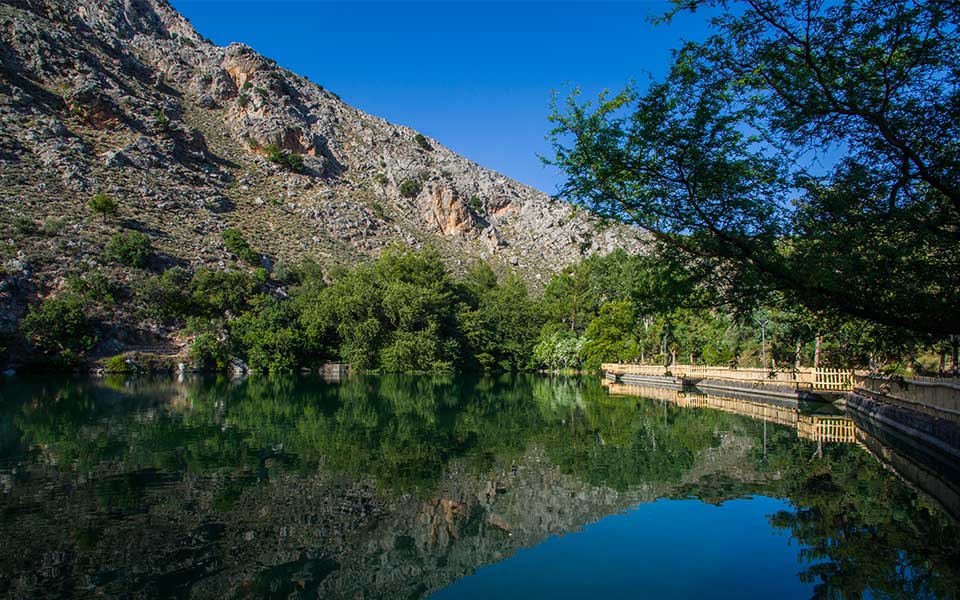
© Clairy Moustafellou
ZAROS
Cool drink
The small man-made lake of Votomos has created an unexpected oasis of lush vegetation in the otherwise craggy surroundings of the village of Zaros. It’s also the source for the bottled water brand of the same name.
Circle the lake and then follow the well-marked 5km-trail through Aghios Nikolaos Gorge to Rouvas, the biggest Kermes oak forest in Europe. At the end of the trail, there’s a small church named after Saint John and a public recreation area where locals often hold festivities.
Check out:
Rouvas Gorge: Traverse this natural wonder by hiking a section of the E4 path that runs the entire length of Crete.
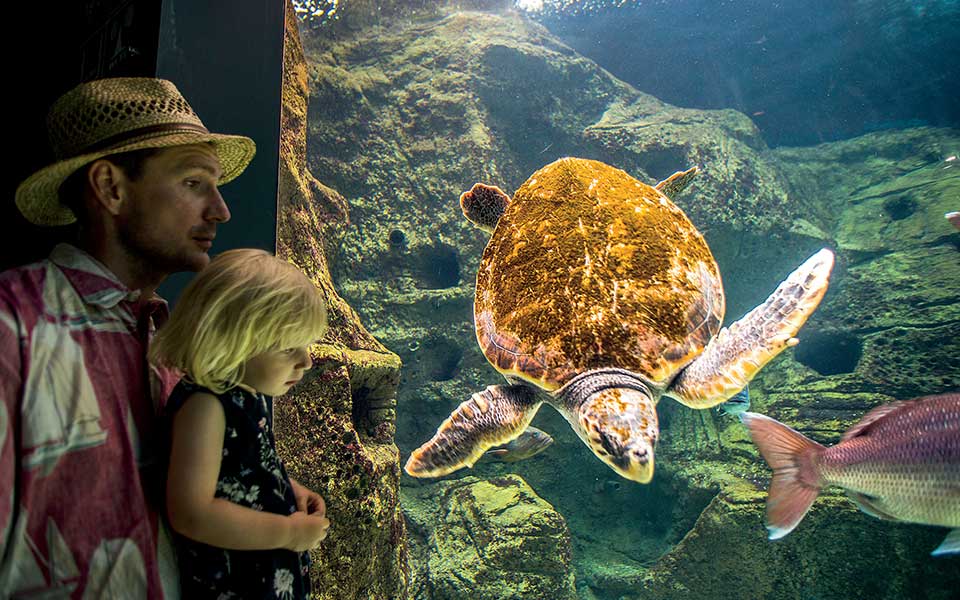
© Clairy Moustafellou
CRETAQUARIUM
Sea show
Roughly 15km east of the city of Irakleio, in the area of Gournes, lies one of the largest aquariums in Europe, covering an area of 5,000 square meters. It’s an underwater world with evocative lighting designed to simulate Crete’s rich marine environment.
All around you in massive tanks live more than 2,000 sea creatures from 200 species, including sharks and sea turtles (open 09:30-19:00).
Check out:
CretAquarium: Get a closer look at sharks, stingrays, jellyfish and 200 other Mediterranean marine species, all without getting wet.
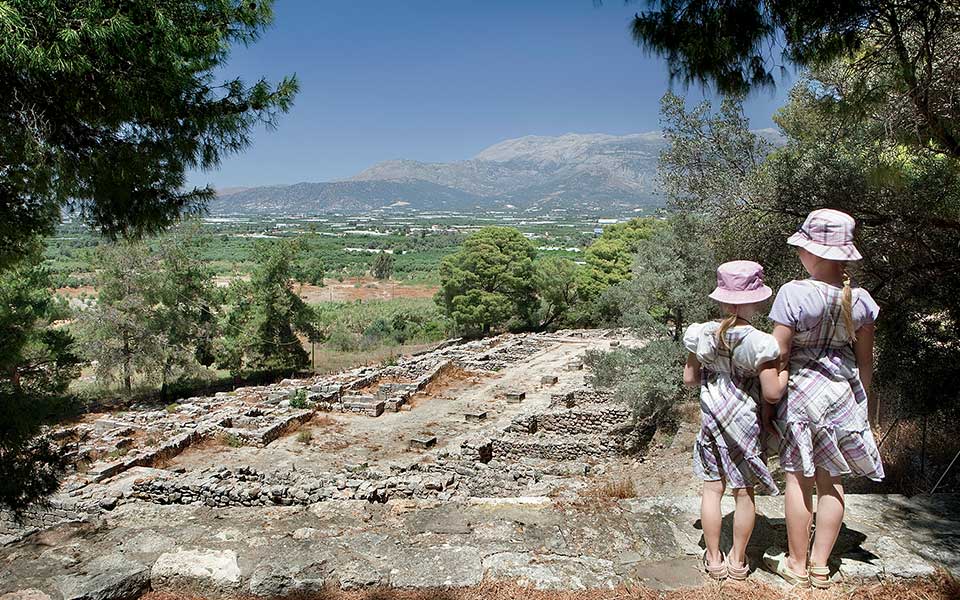
© Tobias Gerber/Laif
PHAISTOS
A palace with a view
After Knossos, Phaistos looks hauntingly familiar, with its own central and west courts, granaries, stepped theater area, storage magazines, pier-and-door residential design and other typical Minoan features.
Located in the western Messara Plain, ancient Crete’s major grain-producing area, Phaistos was an important regional administrative center, along with Aghia Triada, its smaller neighbor which fulfilled a similar function. This was where the Phaistos Disc, now believed to contain a prayer to the Minoans’ Great Goddess, was discovered.
On a more distinct hill than Knossos, Phaistos had its own distinct character: less labyrinthine, more palatial. Settled in Neolithic times, the site continued to be inhabited for millennia, flourishing especially in the Minoan/Mycenaean Bronze Age, early Iron Age and Hellenistic era, finally being eclipsed by nearby Gortyn (2nd c. BC). – John Leonard
Check out:
Knossos: Arrive early and beat the crowds to the ancient Minoan home of the Minotaur, and scene of the winged escape of Daedalus and Icarus.
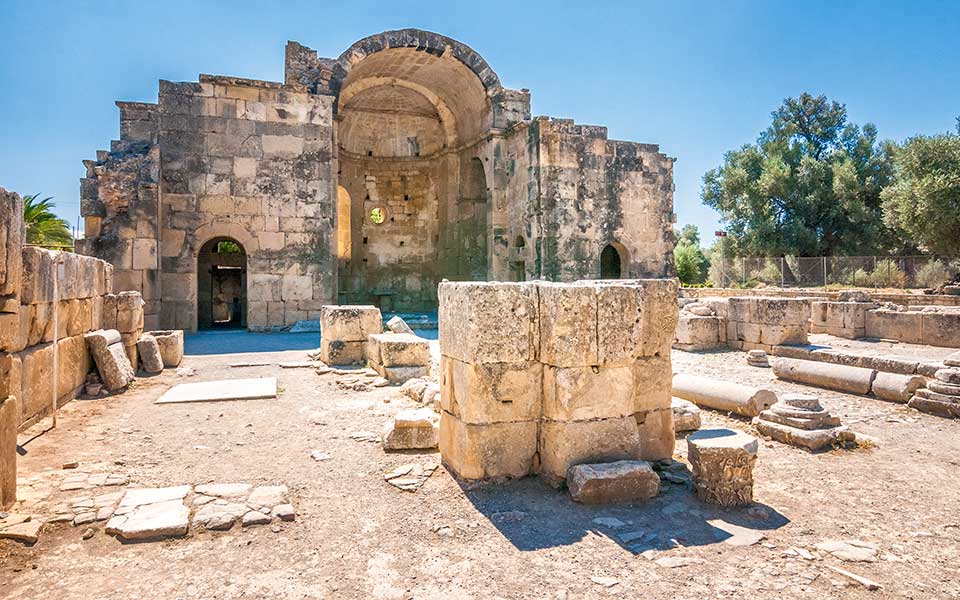
© Shutterstock
GORTYN
Land of the law
Described by Homer as a walled city, with ports at Leben and Matala, Gortyn was an Iron Age city state that increased its influence in Classical times, clashed with Hellenistic Knossos (3rd c. BC), then became the Roman capital of Crete and Libya (Cyrenaica). Later, it served as an Early Christian bishopric.
Gortyn’s ancient authority rested on its extensive law code, inscribed on large stone blocks (ca. 525-400 BC) and displayed at the city’s odeon, or music hall. Europe’s first such code, it contained elements of family law, civil rights and trade relations.
The preserved cityscape includes a governor’s palace, two agoras, baths, a stadium, two theaters, an amphitheater, temples, a shrine to Egyptian gods and a Christian cathedral (6th c. AD). – John Leonard
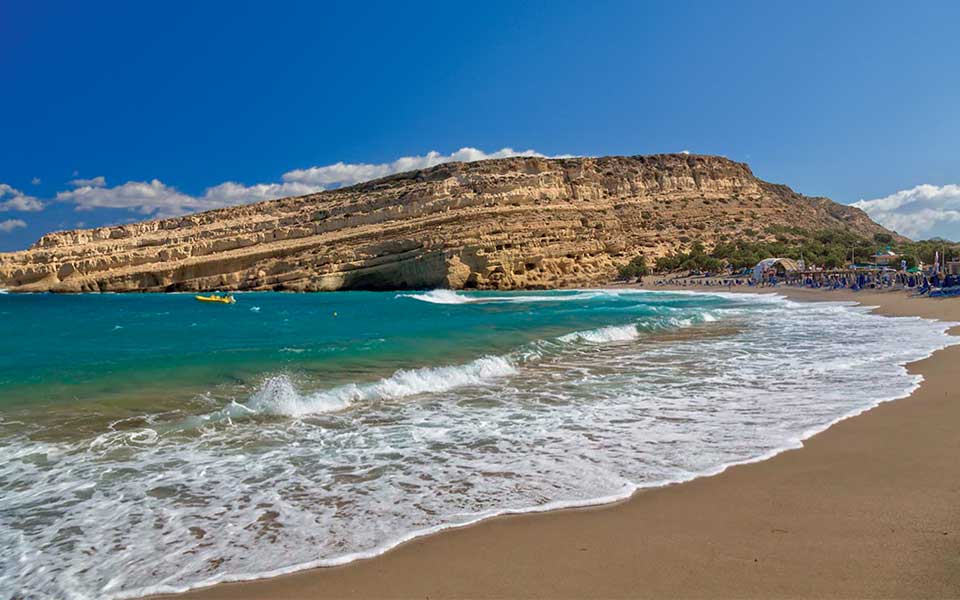
© Perikles Merakos
MATALA
Hippies forever
It served as the port of Phaistos in ancient times and as the port of Gortyn during the Roman era, but perhaps its greatest fame came in the late 1960s when hundreds of hippies from all over the world moved into the caves on the beach and transformed an otherwise nondescript fishing village into a symbol of the movement. The caves, which had been carved into the soft rock face by the area’s prehistoric residents, had been used as either dwelling or tombs.
Today, they are listed as a protected archaeological site. Inside several of these you can see arched graves upon which the latest residents, the hippies, inscribed their names. The seaside village is not very pretty and it can get very busy at peak season, but its history is interesting and a refreshing swim in its crystal waters is always a pleasure.
Check out:
Matala: It may be mainstream today, but in the ‘60s and ‘70s it was home to a community of cave-dwelling hippies.
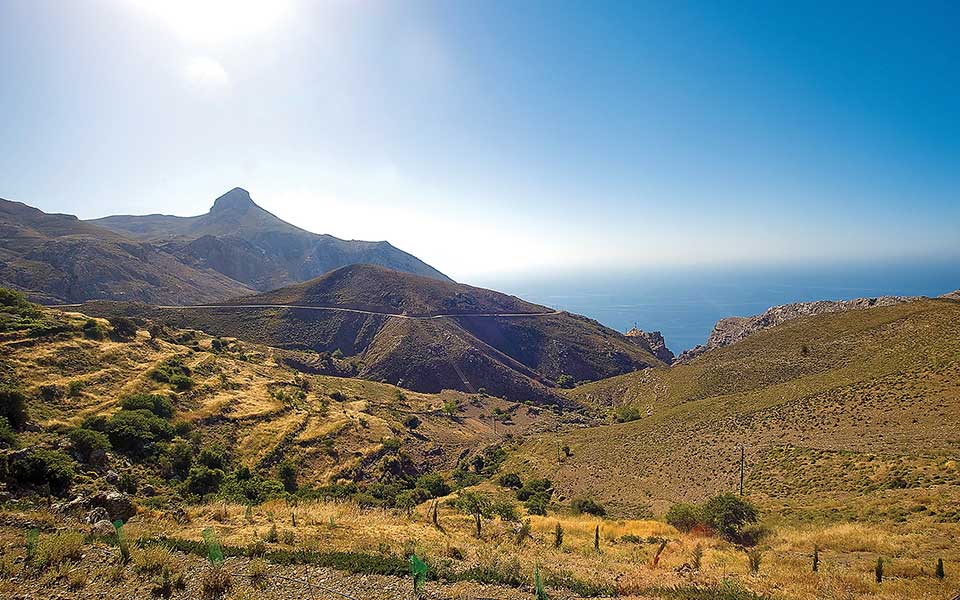
© Getty Images/Ideal Image
THE ASTEROUSIA RANGE
Summit and sand
Dirt roads, traditional villages and impressive ravines that run down to pristine beaches and small seaside settlements: this mountain range has it all. Monks moved into this area before the 7th century, first making their home in caves and later establishing monasteries like Odigitria (14th century) and Koudoumas (19th century) that can still be visited.
In the middle of these mountains stands Kapetaniana, an old, once-abandoned village that’s now home to a beautiful agritouristic guesthouse called Thalori (thalori.com). From here, it’s a breath away to the highest peak in the Asterousia mountains, Kofinas (1230m), with stunning views.
Below, the coast offers a succession of pebbled beaches with sparkling blue waters, though a number can only be reached by via steep paths. Vathy and Martsalo (30 minutes on foot) are quiet, Aghiofarago (20 minutes on foot) is the prettiest and Lentas is the most popular – with a full complement of facilities.
Trypiti is more or less packed with camper vans and mobile homes, Aghios Ioannis boasts a pretty chapel with some interesting frescoes and Aghios Nikitas is notable for its stand of palm trees. Heading east will take you to Listis, a wonderful beach, and Keratokambos, a seaside town with tavernas and shops.
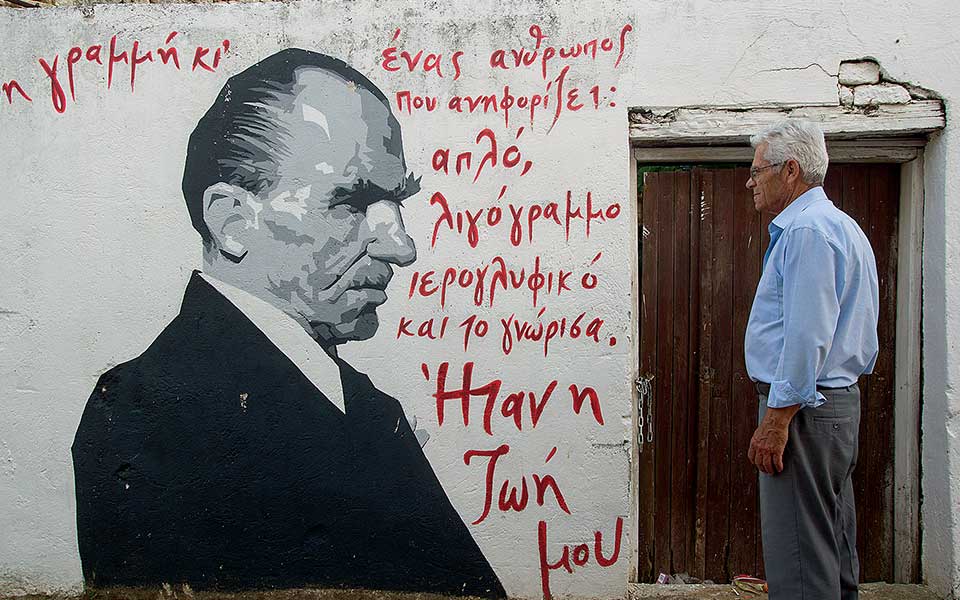
© Clairy Moustafellou
MYRTIA
The birthplace of Kazantzakis
Myrtia is an attractive little village with splendid whitewashed houses framed with flowerpots. It’s also lively, especially toward the late afternoon when the locals gather in the village’s coffee houses.
The main reason for visiting, though, is that this is the birthplace of the great Greek writer Nikos Kazantzakis. In tribute to their native son, residents have written excerpts from his books across the walls of their houses, and there’s an interesting museum dedicated to his life and work as well (kazantzaki.gr, open daily, 09:00-17:00). Exhibit items include his desk and his glasses, as well as manuscripts, including a draft of “Ascesis: The Saviors of God,” regarded as one of his masterpieces.
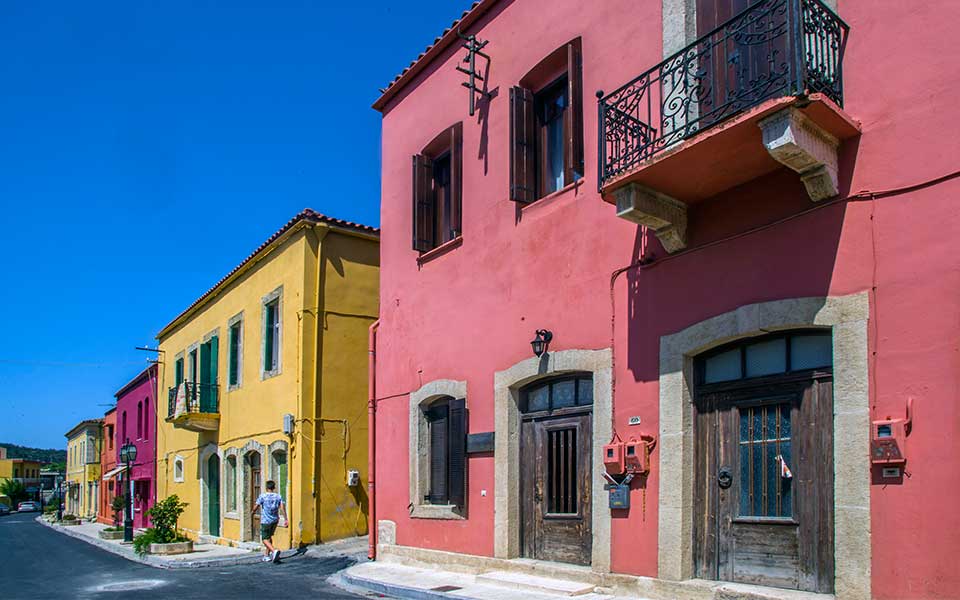
© Perikles Merakos
ARCHANES
Enduring charm
Crete is not renowned for an abundance of picturesque villages, but Ano Archanes is one of the beautiful exceptions and has, indeed, been distinguished with a European award for the restoration work done here. Just a 20-minute drive from Irakleio, this small town of 15,000 people is all pretty cobbled streets, colorful houses with well-tended gardens and quaint cafés and tavernas.
The area’s recorded history stretches all the way back to the Minoan era, as this was the location of a palace considered as important as that of nearby Knossos. Sections of that palace are still visible here and there, while the most important finds are on display in the Archanes Archaeological Collection (Tel. (+30) 2810.752.712, open Wed-Mon 08:30-16:00).
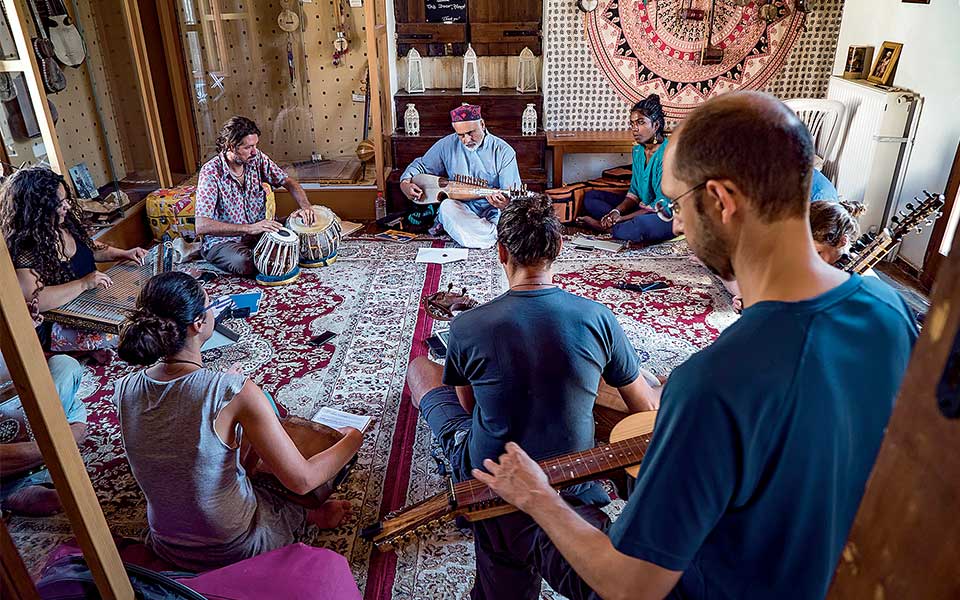
© Perikles Merakos
HOUDETSI
Music Lessons
Musicians from all over the world come to play in the cool garden of the Labyrinth, a music workshop founded in 2003 by Ross Daly, a musician of Irish descent, in order to preserve and evolve the world’s musical traditions. Teachers and students converge every summer for intense week-long seminars, sharing a diversity of musical idioms and cultures. Visitors who aren’t participating in the classes can also enjoy the concerts that are held as part of the workshop.
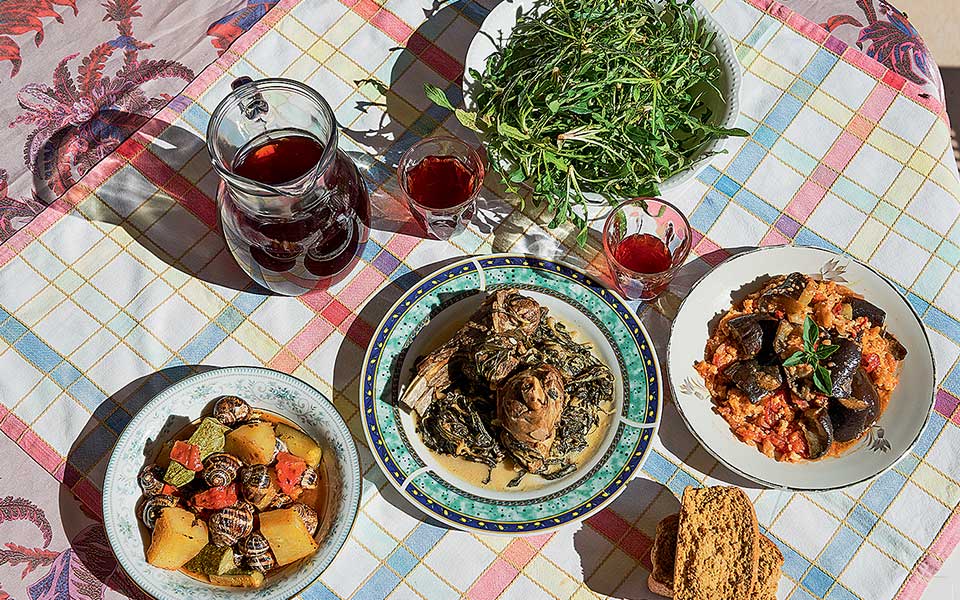
© Perikles Merakos
GOOD FOOD GUIDE
Stavros, Maridaki
Maridaki is a seaside settlement with a beautiful beach; you can get there either on foot by way of an easy uphill path or by boat from the harbor of Tsoutsouros. The small Stavros taverna is on the edge of the settlement, under plane trees and beside a stream that flows into the sea. You’ll enjoy anything that Vaso, Stavros’ wife and a talented cook, prepares in the wood-fired oven. The menu features stuffed vegetables and zucchini flowers; the famous kapriko, or kid goat, which is particularly popular for feasts and holidays; a selection of cheeses; and heavenly homemade ice cream. Tel. (+30) 28910.233.22
Niki, Hersonissos
In the enchanting courtyard of the taverna Niki, you can enjoy traditional specialities from the wood-burning oven. There are dishes such as slow-cooked local lamb and pork, as well as tasty vegetarian dishes such as stuffed tomatoes, eggplants and peppers. Tel. (+30) 28970.512.04
Krassophychia, Krasi
At this atmospheric taverna, the owners have created a richly varied menu that includes dishes that combine modern and classic cuisine. They also operate a small grocery store selling foodie souvenirs. Tel. (+30) 28970.539.14
Check out:
Irakleio vineyards: Taste the magic of the Cretan terroir at one of 23 wineries in the heart of the island’s wine country.
BANANAS FROM ARVI
A delicious brand name
The seaside town of Arvi is famous for cultivating a particular variety of Lady Finger bananas, first planted here in 1920, which flourished thanks to the local soil and the subtropical climate. Together with carob fruit, avocados, prickly pears and aloe vera, these bananas are yet another crop that makes the island a proud producer of unconventional foodstuffs. Look for them at local greengrocers and larger supermarkets under their own name, Arvi Bananas.
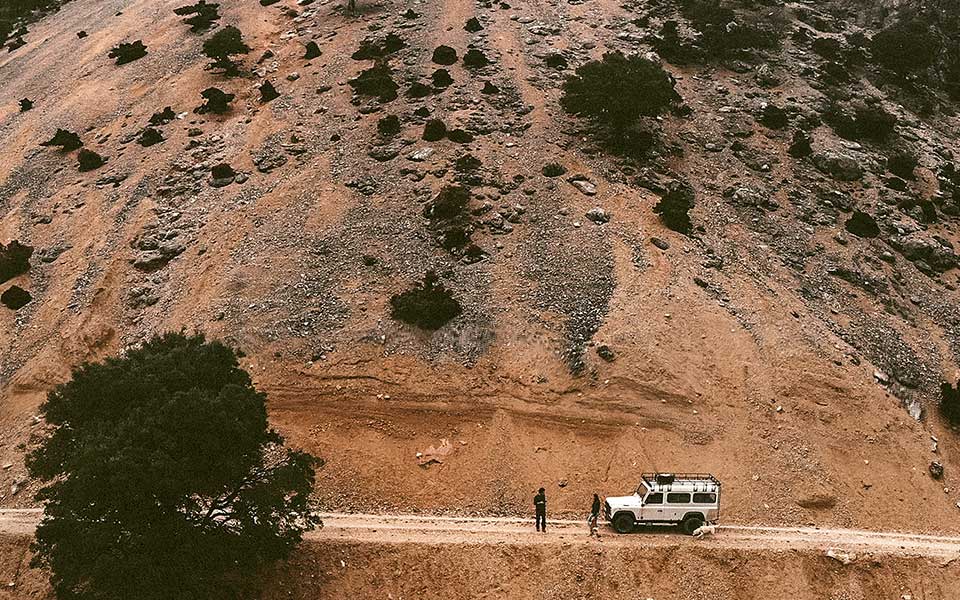
© Christos Manioros/@Melina_and_Markos
OMALOS
Far from civilization
You’ll hear nothing but the sounds of nature, your cellphone won’t work, and you’ll find little to do but watch the mountain shepherds go about their business: one of the best ways to empty your mind of worries.
The Omalos Plateau stands at 1300m, south of Mt Dikti on the border between the regions of Irakleio and Lasithi. The area can be reached via the villages of Viannos and Kato Symi, and then along a bumpy 10km dirt road.
Unlike on other parts of the island, some shepherds here still use their mitata, small summer dwellings high up in the mountains; if you happen to come across Nikos Stavrakakis and his nephew Kostis Frangiadoulis, two of those who do, they’ll probably treat you to a glass of raki, tell you about life in the hills and show you how they milk their animals and make cheese. If you’re lucky, you may even come across a get-together of locals livening things up with a song and a dance.
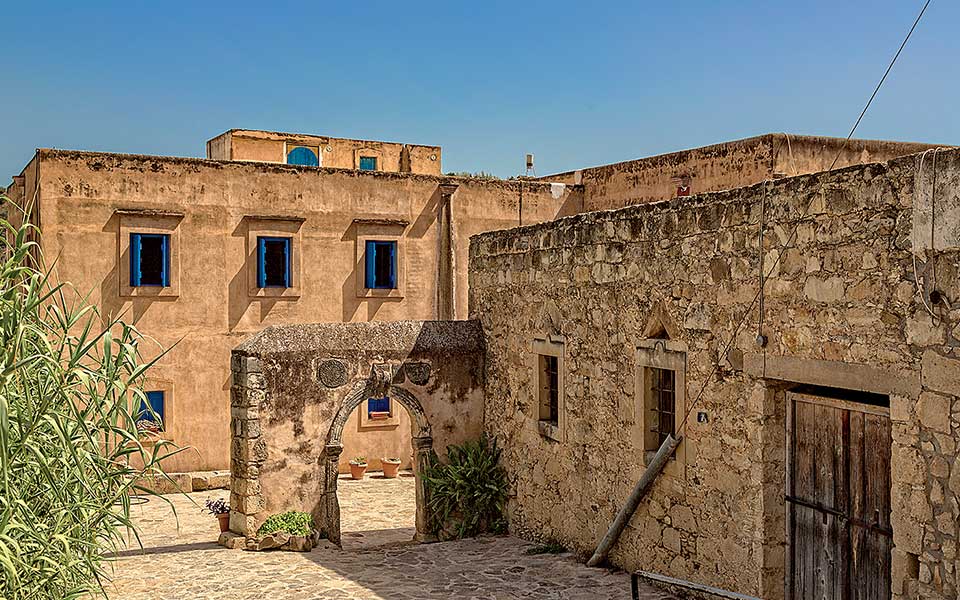
© Perikles Merakos
MESSARA
Crete’s cornucopia
The island’s largest plain used to be its main grain-producing zone; today, you’ll find mainly olive trees (of the Koroneiki variety), grapevines, and fruits and vegetables (both out in the open and in greenhouses). It also has a vibrant expat/snowbird community.
The village of Vori is very pretty and is home to the recently renovated Museum of Cretan Ethnology (cretanethnologymuseum.gr), where you can find out about the island’s history and customs. Then head to Sivas for a coffee at the old kafeneio in the village square; there’s no sign, but you’ll recognize it by its green door and the bushy pepper plant at the entrance. Photographs of paintings by El Greco and of loyal patrons adorn the walls, while the tiny open kitchen turns out quick meze dishes to accompany glasses of tsikoudia, the local spirit – from dried chickpeas and pickled wild green bulbs to graviera cheese and rusks with olives and sea fennel.
In the village of Kouses, ask around for Yiannis Yiannoutsos’ store called Votano. He’s an expert on herbs, knows all sorts of alternative remedies and makes fragrant herbal teas that you can enjoy on his small rooftop terrace, looking out over the Messara plain.










